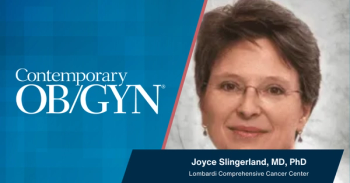
- Vol 65 No 05
- Volume 65
- Issue 05
Vasomotor symptoms and faster epigenetic aging
Accelerated biological aging was seen in women who had severe menopausal vasomotor symptoms (VMS) on enrollment in the Women’s Health Initiative Observational Study (WHI-OS), or late-occurring VMS (at enrollment but not at/during their reported menopause transition, according to a study in The Journal of Clinical Endocrinology & Metabolism.
Accelerated biological aging was seen in women who had severe menopausal vasomotor symptoms (VMS) on enrollment in the Women’s Health Initiative Observational Study (WHI-OS), or late-occurring VMS (at enrollment but not at/during their reported menopause transition, according to a
“Previously, we discovered that VMS was associated with indicators of age-related health risks, such as cardiovascular disease (CVD) and osteoporosis,” said senior author Rebecca Thurston, PhD, a professor of psychiatry, psychology and epidemiology at the University of Pittsburgh. “We were interested in finding out if women with VMS had greater underlying epigenetic aging.”
The investigators examined connections between menopausal VMS and biological aging in 1,206 participants of the WHI-OS (average age 65 years at enrollment) who retained both ovaries and were not taking hormone therapy. Recruitment for baseline assessment occurred between 1993 and 1998.
The sample comprised 55% non-Hispanic White women, 26% non-Hispanic Black women and 19% Hispanic women. Roughly one-third of the sample reported VMS at enrollment and 60% of the sample had VMS at some point during the menopause transition and/or at enrollment.
Connections between menopausal VMS and biological aging were assessed by two DNA methylation-based epigenetic aging indicators formerly linked to poor health outcomes: DNAm PhenoAge and DNAm GrimAge.
Although no single metric proposed to characterize biological aging is universally accepted, DNAm-based indications offer the advantage of being a broad-based marker of accelerated aging across a diverse set of bodily systems and indicate robust relationships with adverse health outcomes, including CVD, mortality and Alzheimer’s disease.
The study concluded that severe hot flashes at enrollment were significantly associated with higher DNAm PhenoAge compared to no hot flashes: odds ratio (OR) = 2.79; P= 0.028.
Late-occurring VMS were also associated with a significantly higher DNAm PhenoAge (OR = 2.15; P = 0.011), and significantly higher DNAm GrimAge (OR = 1.09; P = 0.010), relative to no VMS.
“We were not surprised that VMS were associated with greater epigenetic aging, given other findings linking them to health risks,” Dr. Thurston told Contemporary OB/GYN. “However, to my knowledge, we are the first to show this association. But we do not know at this time why postmenopausal women with severe or late-occurring VMS have greater biological aging.”
Three factors significantly associated with greater epigenetic aging for both DNA indicators were racial/ethnic minority status compared to White women (P = 0.0001), lower education (P = 0.001) and a higher body mass index (BMI) (P < 0.0001). Greater pack years of smoking was also a significant risk factor for biological aging, but only for DNAm GrimAge (P < 0.0001).
The authors accounted for these factors in their analyses, and therefore associations between VMS and epigenetic aging were not explained by them.
Based on study results, “women with VMS, particularly later in life, should engage in healthy preventive health measures,” said Dr. Thurston, president of the North American Menopause Society (NMS).
The next two steps will be to investigate women at the time of their menopause transition, as opposed to the WHI women who are considerably older, and to use more rigorous measures of VMS, such as physiologic measures of VMS and prospective, self-report measures of VMS.
Dr. Thurston is a consultant to Astellas Pharma, Virtue Health, Pfizer and Procter & Gamble.
References:
Thurston RC, Carroll JE, Levine M, et al. Vasomotor symptoms and accelerated epigenetic aging in the Women’s Health Initiative (WHI). J. Clin. Endocrinol. Metab. 2020;105(4). doi:10.1210/clinem/dgaa081
Articles in this issue
over 5 years ago
Additional studies needed on drugs for osteoporosisover 5 years ago
Cervicovaginal microbiome and HPV progressionover 5 years ago
How are miscarriages discussed on social media?over 5 years ago
‘Momnibus’ legislation aims to help black momsover 5 years ago
The last normal place in the hospitalover 5 years ago
Managing BRCA results from 23andMeover 5 years ago
Liletta IUS: not just for long-term contraceptionover 5 years ago
Vulvovaginal atrophy among breast cancer survivorsNewsletter
Get the latest clinical updates, case studies, and expert commentary in obstetric and gynecologic care. Sign up now to stay informed.




